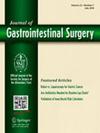Long-term outcomes of additional surgery vs. observation after noncurative endoscopic submucosal dissection for early gastric cancer and application value of the eCura scoring system: a propensity score–matched study
IF 2.2
3区 医学
Q3 GASTROENTEROLOGY & HEPATOLOGY
引用次数: 0
Abstract
Background
Endoscopic submucosal dissection (ESD) is increasingly used for treating early gastric cancer (EGC). Noncurative ESD often necessitates additional surgical intervention because of the high risk of lymph node metastasis (LNM), but the optimal post-ESD management remains controversial.
Methods
This study collected data from patients with EGC who underwent noncurative ESD at Nanjing Drum Tower Hospital between January 2014 and December 2021. Patients were divided into surgical and observation groups and stratified by eCura scores into low (0–1), intermediate (2–4), and high-risk (5–7) categories. A 1:1 propensity score–matched analysis was performed between the 2 groups. Receiver operating characteristic analysis was used to assess the eCura score’s ability to predict LNM. Survival outcomes, including overall survival (OS) and disease-specific survival (DSS), were compared between groups.
Results
Among the 260 patients, 91 were included in each group. No significant differences in OS or DSS were observed between the groups overall or among low-risk and intermediate-risk patients. However, high-risk patients in the surgical group had significantly better 5-year OS rates than those in the observation group, whereas the difference in DSS was not statistically significant. The eCura score exhibited strong predictive accuracy for LNM (area under the curve, 0.835; sensitivity, 70%; specificity, 92%). The subgroup analysis suggested that postchemoradiotherapy and total gastrectomy might be associated with better prognosis, although the differences were not statistically significant.
Conclusion
The eCura scoring system seems to be a valuable tool for guiding post-ESD management. Treatment decisions should be based on the individual characteristics and clinical factors of each patient. For carefully selected patients who are not suitable candidates for surgery, ESD may be a viable alternative treatment option.

早期胃癌非根治性内镜黏膜下剥离术后追加手术与观察的长期疗效对比以及 eCura 评分系统的应用价值:倾向评分匹配研究
内镜下粘膜下剥离术(ESD)越来越多地用于治疗早期胃癌(EGC)。由于淋巴结转移(LNM)的高风险,无法治愈的ESD通常需要额外的手术干预,但ESD后的最佳处理仍然存在争议。方法本研究收集2014年1月至2021年12月在南京鼓楼医院接受非治愈性ESD治疗的EGC患者的数据。将患者分为手术组和观察组,根据eCura评分分为低(0-1)、中(2-4)和高危(5-7)。在两组之间进行1:1倾向评分匹配分析。使用受试者工作特征分析来评估eCura评分预测LNM的能力。比较两组间的生存结果,包括总生存期(OS)和疾病特异性生存期(DSS)。结果260例患者中,每组91例。总体而言,两组之间或低危和中危患者之间的OS或DSS均无显著差异。但手术组高危患者的5年OS率明显优于观察组,DSS差异无统计学意义。eCura评分对LNM具有较强的预测准确性(曲线下面积,0.835;敏感性,70%;特异性,92%)。亚组分析提示放化疗后和全胃切除术可能与较好的预后相关,但差异无统计学意义。结论eCura评分系统是指导esd术后管理的一种有价值的工具。治疗决定应基于每个患者的个体特征和临床因素。对于精心挑选的不适合手术的患者,ESD可能是一种可行的替代治疗选择。
本文章由计算机程序翻译,如有差异,请以英文原文为准。
求助全文
约1分钟内获得全文
求助全文
来源期刊
CiteScore
5.50
自引率
3.10%
发文量
319
审稿时长
2 months
期刊介绍:
The Journal of Gastrointestinal Surgery is a scholarly, peer-reviewed journal that updates the surgeon on the latest developments in gastrointestinal surgery. The journal includes original articles on surgery of the digestive tract; gastrointestinal images; "How I Do It" articles, subject reviews, book reports, editorial columns, the SSAT Presidential Address, articles by a guest orator, symposia, letters, results of conferences and more. This is the official publication of the Society for Surgery of the Alimentary Tract. The journal functions as an outstanding forum for continuing education in surgery and diseases of the gastrointestinal tract.

 求助内容:
求助内容: 应助结果提醒方式:
应助结果提醒方式:


